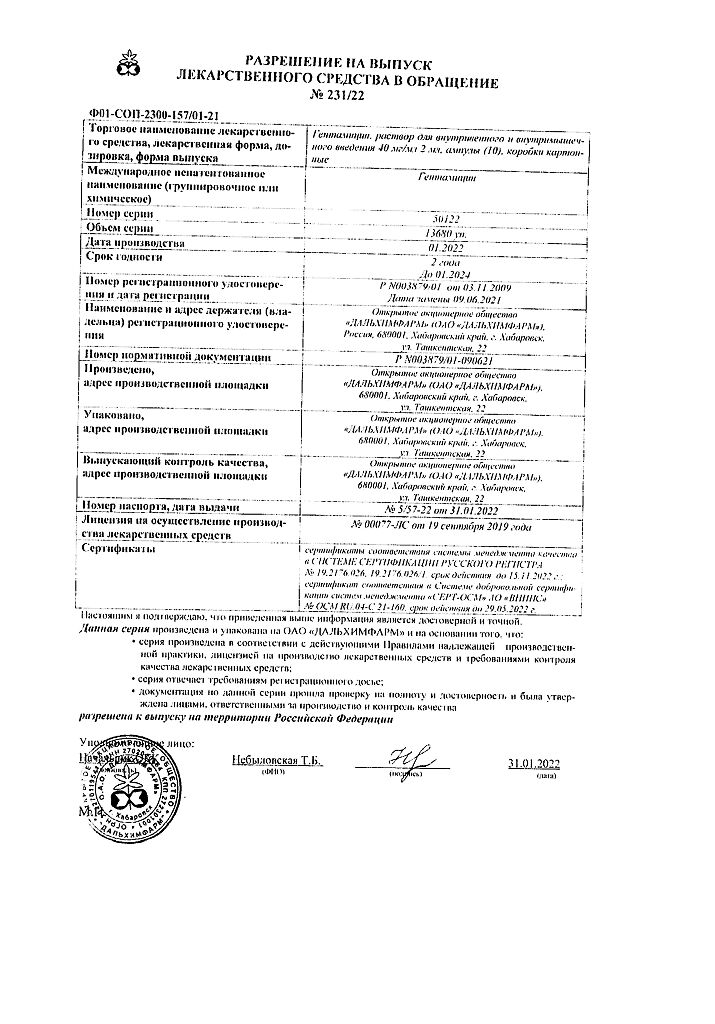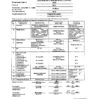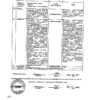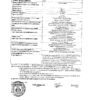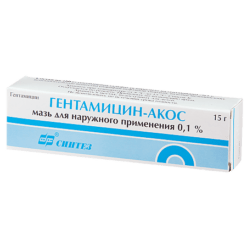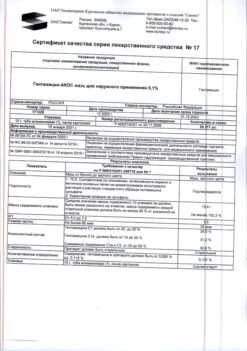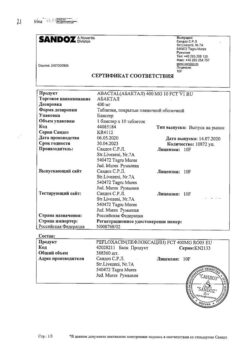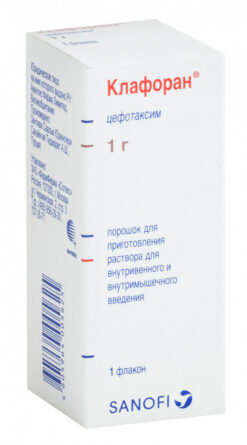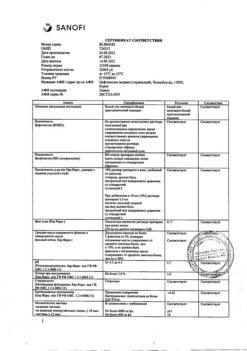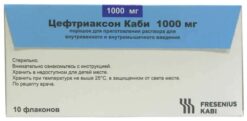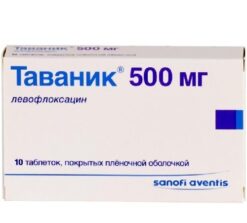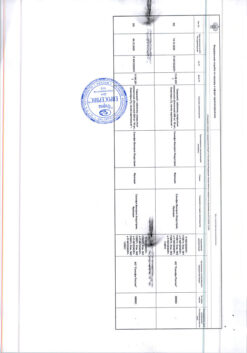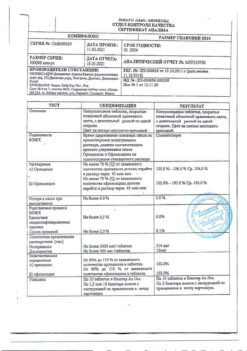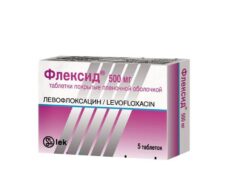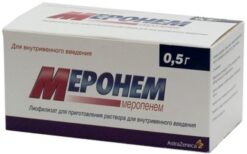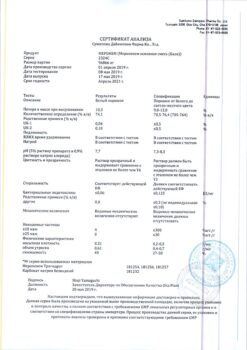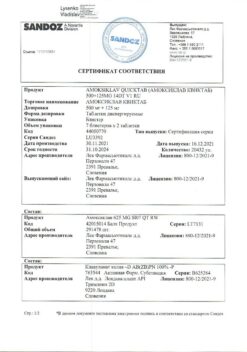No products in the cart.
Gentamicin, 4%, 2 ml, 10 pcs.
€2.84 €2.58
Description
A broad-spectrum antibiotic of the aminoglycoside group. < br>
It binds to 30S subunit of ribosomes and disrupts protein synthesis, preventing formation of transport and information RNA complex, thus causing misreading of genetic code and formation of non-functional proteins.
The drug has bactericidal action against many Gram-positive and Gram-negative microorganisms, including Pseudomonas aeruginosa, Escherichia coli, Enterobacter spp, Proteus spp., Klebsiella spp., Serratia spp., Citrobacter spp., Providencia spp., Campylobacter pylori, Campylobacter jejuni, Salmonella spp., Shigella spp., Francisella tularensis, Acinetobacter calcoaceticus, Aeromonas spp.
It acts on strains of Staphylococcus spp. resistant to penicillin.
Resistance of microorganisms develops slowly, but strains resistant to neomycin and kanamycin are also resistant to gentamicin (cross-resistance).
The drug has no effect on anaerobes, fungi, viruses, protozoa.
Indications
Indications
Infectious and inflammatory diseases caused by sensitive gram-negative aerobic bacteria:
sepsis, meningitis, peritonitis, endocarditis (usually in combination with beta-lactam antibiotics);
abdominal infections: abdominal abscesses, cholangitis (usually in combination with metronidazole or clindamycin);
urinary tract infections;
secondary infections in burns, injuries and surgical interventions;
tularemia;
respiratory infections (pneumonia, pleural empyema, lung abscess);
prevention of postoperative infections of the abdominal cavity, especially during operations on the urinary tract and intestines.
Pharmacological effect
Pharmacological effect
Broad-spectrum antibiotic from the aminoglycoside group.
It binds to the 30S subunit of ribosomes and disrupts protein synthesis, preventing the formation of a transport and messenger RNA complex, resulting in erroneous reading of the genetic code and the formation of non-functional proteins.
The drug has a bactericidal effect against many gram-positive and gram-negative microorganisms, including Pseudomonas aeruginosa, Escherichia coli, Enterobacter spp., Proteus spp., Klebsiella spp., Serratia spp., Citrobacter spp., Providencia spp., Campylobacter pylori, Campylobacter jejuni, Salmonella spp., Shigella spp., Francisella tularensis, Acinetobacter calcoaceticus, Aeromonas spp. etc.
Acts on strains of Staphylococcus spp. resistant to penicillin.
Resistance of microorganisms develops slowly, but strains resistant to neomycin and kanamycin are also resistant to gentamicin (cross-resistance).
The drug does not act on anaerobes, fungi, viruses, or protozoa.
Special instructions
Special instructions
The likelihood of developing nephrotoxicity is higher in patients with impaired renal function, as well as when high doses of the drug are prescribed for a long time, so renal function should be regularly monitored (1 or 2 times a week), and in patients who have been on treatment for more than 10 days – daily.
To avoid the development of hearing impairment, it is recommended to regularly (1 or 2 times a week) conduct studies of vestibular function and hearing, monitor kidney function, and determine the concentration of gentamicin in the blood.
If symptoms of hearing loss are detected, the dose of the drug is reduced or treatment is stopped.
During long-term therapy, microbial resistance may develop, in which case it is necessary to discontinue the drug.
Active ingredient
Active ingredient
Gentamicin
Composition
Composition
Active substance:
gentamicin sulfate 40 mg in 1 ml solution (80 mg in ampoule)
Contraindications
Contraindications
hypersensitivity to the drug, components of the drug and to other antibiotics from the aminoglycoside group;
acoustic neuritis;
myasthenia gravis;
severe renal failure with uremia and azotemia;
the neonatal period and prematurity of children (due to the high risk of developing ototoxic and nephrotoxic effects);
pregnancy and lactation period.
Side Effects
Side Effects
Oliguria, proteinuria, microhematuria, renal failure, hearing loss, deafness, vestibular disorders, increased levels of liver transaminases, hyperbilirubinemia, anemia, leukopenia, granulocytopenia, thrombocytopenia; nausea, vomiting, headache, drowsiness, neuromuscular conduction disorders, allergic reactions (skin rash, itching, fever, rarely – Quincke’s edema).
Recommendations for use
Recommendations for use
The drug is administered intramuscularly and intravenously.
Typically, the daily dose in adults for diseases of moderate severity is 3 mg/kg, the frequency of administration is 2 – 3 times a day. In severe cases of the disease, the daily dose is 5 mg/kg, the frequency of administration is 3-4 times a day; after improvement of the condition, the dose is reduced to 3 mg/kg/day. The maximum daily dose is 5 mg/kg.
Patients with infectious and inflammatory diseases of the urinary tract and normal kidney function are prescribed 1 time per day at a dose of 120-160 mg for 7-10 days; for gonorrhea – 240-280 mg once. With a single intravenous administration of a daily dose of gentamicin, the administration time should be 30-60 minutes. With a 2-3-fold administration of gentamicin: its concentration in the serum before the next administration should not exceed 2 μg/ml, with a single administration – no higher than 1 μg/ml. The average duration of treatment is 7-10 days.
Children from 1 month to 12 years are prescribed intramuscularly or intravenously at a dose of 6 mg/kg/day in 1-3 doses.
Children over 12 years of age: intramuscularly or intravenously – 2-5 mg/kg/day in 1-3 doses.
Prevention of postoperative abdominal infections: for intestinal surgery, a single dose of gentamicin is prescribed in combination with metronidazole or clindamycin.
Storage conditions
Storage conditions
In a place protected from light, at a temperature not exceeding 15 °C.
Shelf life
Shelf life
2 years
Manufacturer
Manufacturer
Dalkhimfarm, Russia
Additional information
| Shelf life | 2 years |
|---|---|
| Conditions of storage | In a place protected from light, at a temperature not exceeding 15 °C. |
| Manufacturer | Dalkhimpharm, Russia |
| Medication form | solution for injections and infusions |
| Brand | Dalkhimpharm |
Other forms…
Related products
Buy Gentamicin, 4%, 2 ml, 10 pcs. with delivery to USA, UK, Europe and over 120 other countries.




